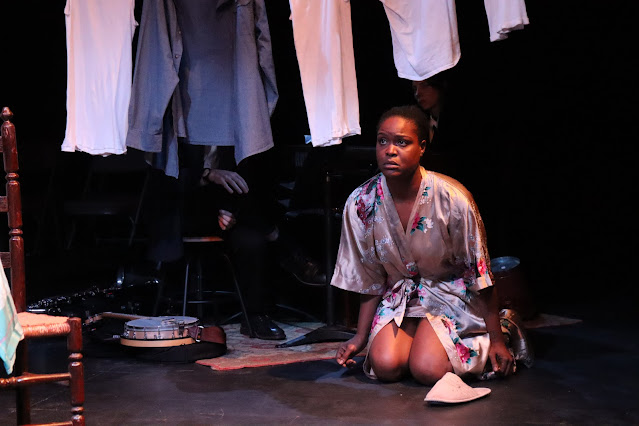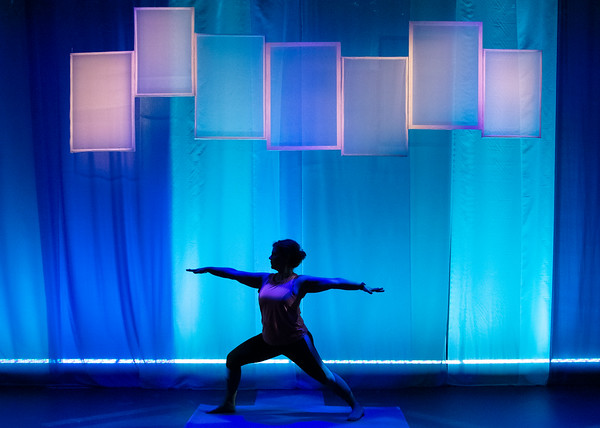Review: Grab a Seat with the "Ladies at a Gay Girls' Bar"
Ladies at a Gay Girls' Bar, 1938-1969
Choreographed, written, and performed by Maggie Cee
Presented by In the Streets Productions at UNDER St. Marks
94 St. Marks Place, Manhattan, NYC
June 24 and 29, 2024
 |
| Maggie Cee in Ladies at a Gay Girls' Bar. Photo by Olivia Blaidsell. |
In the show, Cee inhabits, with adroit distinctiveness, several characters from across the decades–Elsie and Dorothy, who patronized lesbian bars, and Midge, who worked at one, as well as a teenage Maggie, whose work on a term paper in the 1990s also acts as frame for her exploration of her sexual identity and femininity–and integrates these performances with textual excerpts and voiceover and archival recordings. Simply discovering that lesbian is an available identity and that there are other lesbians out there is a foundational first step for some of these women. But questions around how to occupy that identity of course remain: if gender expression can be influenced by sexuality, and if gender consists of repeated acts of performance, from where do we draw our repertoire of such acts? Much of what the play's women talk about touches on such questions, especially on the models of butch and femme, including misconceptions about them and their dynamics; but these characters are also concerned with less large-scale issues, like the initial nervousness of first going to a lesbian bar or how to get women there to ask for a dance. The production, which draws on archives and published works (helpfully cataloged in the program, along with the show's musical selections), also acknowledges that lesbian bars were historically primarily white spaces, with Black lesbians more likely to socialize at house parties or similar venues. Neither are the books to which some of the characters turn above critique, however helpful and pathbreaking they may have been, and Cee critiques them, calling out, for instance, the misogyny in Ann Aldrich's 1955 non-fiction lesbian pulp We Walk Alone. The show's critiques also encompass the rigid binaries and norms (in relationships as well as in public spaces) that can be enforced within queer communities; other lesbians, for example, may disrespect femmes or demonize them for ability to "pass," and Cee's show wonders about what she calls the seeming disappearance of later-in-life femmes and their voices.
 |
| Maggie Cee in Ladies at a Gay Girls' Bar. Photo by Olivia Blaidsell. |
-John R. Ziegler and Leah Richards



Comments
Post a Comment